This recipe is from Ilocos region I, a tamales made from dulong or a small fish found mostly in the northern part of the Philippines. The fresh dulong is wrapped in banana leaves and then poached. Dulong is very common in wet market so you can’t miss it. I’m just not sure what is the English word for that fish because I use to think that they are baby anchovies. But with a little research I found out that it is also called lacustrine goby.
Tamales na Dulong: A Taste of Ilocos
In the heart of the northern Philippines, where the flavors of the sea meet the simplicity of rural life, lies a lesser-known delicacy that captures the essence of local cuisine: Tamales na Dulong. This dish, a regional favorite from Ilocos, brings together the bounty of the sea and the tradition of banana leaf-wrapped cooking, creating a humble yet deeply flavorful meal.
While the term “tamales” might evoke thoughts of the Mexican variety filled with corn masa and meat, the Filipino version is a bit different. Here, the star of the show is dulong, a small fish found in abundance in the waters of the northern regions of the Philippines. These tiny, translucent fish are carefully mixed with a few simple ingredients, wrapped in banana leaves, and steamed to perfection.
For many Ilocanos, this dish is more than just food—it’s a connection to home, tradition, and the sea.
The Unique Dulong Fish
If you’ve ever wandered through a wet market in Ilocos, chances are you’ve encountered dulong. Often sold fresh, dulong is a small, silvery fish, sometimes referred to as lacustrine goby. It’s so tiny that at first glance, you might mistake it for baby anchovies. But despite its size, this fish packs a punch in flavor and is highly prized in local cooking.
In the past, dulong was largely considered a humble catch, something you could gather in abundance without much fuss. Today, however, it has gained a bit of a cult following, with food lovers seeking out this delicacy whenever they visit Ilocos. The fish itself has a soft texture, and when poached in banana leaves, it takes on the flavor of the ingredients it’s mixed with while maintaining its delicate character.
Wrapping Tradition: Banana Leaves in Filipino Cooking
One of the key components of Tamales na Dulong is the use of banana leaves for wrapping. Wrapping food in banana leaves is an age-old practice in the Philippines, serving both practical and flavorful purposes. The leaves act as a natural steamer, locking in moisture and infusing the ingredients with a subtle, earthy aroma.
The process of wrapping the mixture into neat little squares before boiling it is a skill passed down through generations. There’s an art to getting the banana leaves just right—soft enough to fold but strong enough to hold the ingredients inside without breaking apart during cooking. For beginners, it may take a few tries to master this technique, but the reward is worth it. The leaves not only keep the dulong mixture together but also impart a gentle aroma that enhances the overall taste of the dish.
How Tamales na Dulong is Made
The preparation of Tamales na Dulong is deceptively simple. It begins with mixing fresh dulong with a few key ingredients. This mixture forms the filling, which is then carefully wrapped in banana leaves. The wrapped parcels are placed in a pot with water, where they’re poached for about 30 minutes. The result is a delicate dish that’s soft, fragrant, and brimming with flavor.
Once cooked, it’s traditionally served with a side of calamansi juice. The tartness of calamansi cuts through the richness of the fish, creating a balance of flavors that is both refreshing and satisfying. For a dish with so few ingredients, the final result is surprisingly complex in flavor, with the dulong taking center stage, supported by the subtle notes of the banana leaf and the bright acidity of the calamansi.
A Humble Yet Flavorful Dish
Despite its simplicity, Tamales na Dulong is packed with flavor. The natural sweetness of the fish, the earthiness of the banana leaves, and the zing of calamansi create a unique taste experience that lingers long after the last bite. It’s a dish that highlights the beauty of Filipino food: humble, straightforward, but incredibly satisfying.
For beginners in Filipino cooking, this dish is a great starting point. The ingredients are easy to find, especially if you live near a wet market, and the cooking process is relatively simple. Yet, despite its ease, the result feels like something truly special—one of those dishes that brings a sense of accomplishment when you serve it to friends and family.
A Bite of Ilocano Heritage
At its core, Tamales na Dulong is a dish that speaks of the Ilocano way of life—simple, resourceful, and deeply connected to the sea. It’s a reflection of the region’s rich culinary history, where fresh ingredients are celebrated, and traditional cooking methods are passed down from one generation to the next.
While this dish may not have the widespread fame of other Filipino staples, it holds a special place in the hearts of those who grew up eating it. For those new to it, it offers a delicious introduction to the flavors of the northern Philippines. Whether you’re making it at home for the first time or enjoying it at a local eatery, Tamales na Dulong is sure to leave a lasting impression.
So the next time you find yourself in Ilocos, or if you happen to stumble upon some fresh dulong at your local market, consider giving this dish a try. It’s a taste of Ilocano heritage wrapped in banana leaves, ready to bring the flavors of the sea to your table.
How to Cook Tamales na Dulong
Ingredients
- 3 cups fresh dulong
- 2 tsp. ginger finely chopped
- 2 Tbsp. onion sliced
- 2 tsp. salt
- 2 cups water
- 2 Tbsp. calamansi juice
- Banana leaves about 7 inches x 12 inches
Instructions
How to cook Tamales na Dulong
- Mix the first four ingredients together.
- Place 1/3 cup of the mixture on two layers of banana leaves.
- Wrap in the form of a square and tie with a string.
- Put wrapped tamales in pan and add two cups water.
- Cover and boil 30 minutes over moderate heat.
- Serve with calamansi juice. Good for 6 person.
Notes
Cooking Tips:
Use Fresh Banana Leaves for Best Flavor
When preparing Tamales na Dulong, opt for fresh banana leaves to wrap the mixture. Fresh leaves are more pliable, making it easier to fold them without tearing. Additionally, they impart a subtle, earthy aroma that enhances the overall flavor of the dish during steaming.Tie the Wraps Securely
Ensure you tie the banana leaf wraps securely with kitchen string to prevent the mixture from leaking out during cooking. A loose wrap can cause the contents to spill into the water, diluting the flavor. A tightly sealed packet helps the tamales cook evenly and retain its shape.Don't Overcook the Fish Mixture
While poaching, avoid overcooking the tamales, as it can make the dulong fish tough and dry. Stick to the recommended cooking time of 30 minutes for a tender, flavorful result. Overcooking may also cause the banana leaves to break apart, affecting presentation.
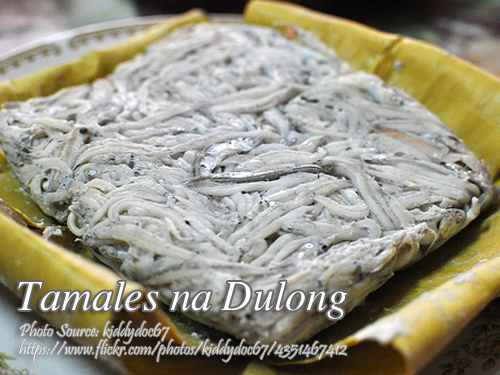

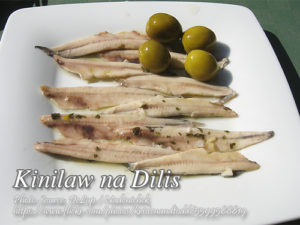
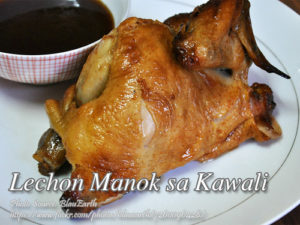
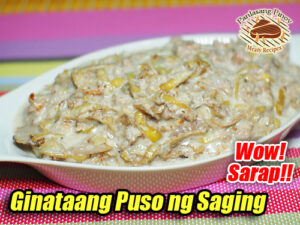
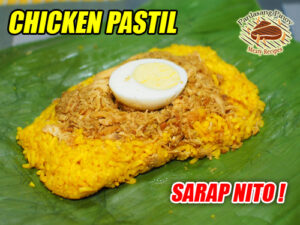
Hello,
“IPON” is what they call this in Ilocos. Silver fish if I am not mistaken in english. They also make “kilaw” of it when fresh, just mixed with the usual calamansi, lasona (shallot), salt and kamatis. They also sometimes make fish patties.
Hi Jeanette, thanks for that informative comment!